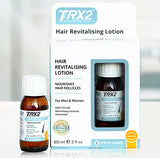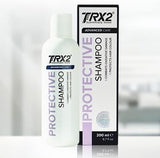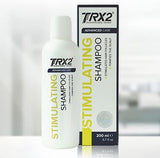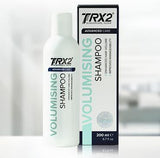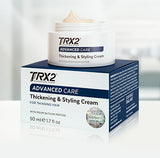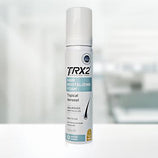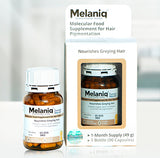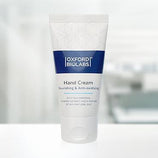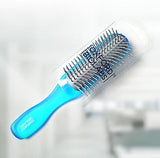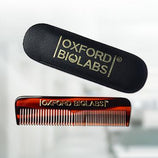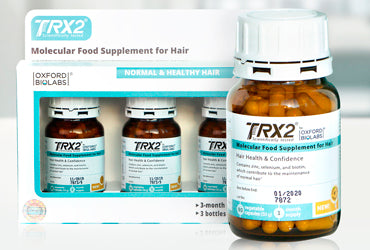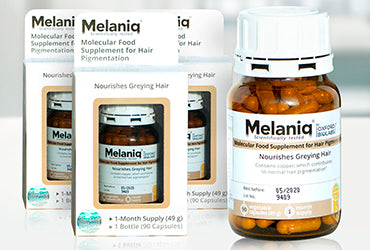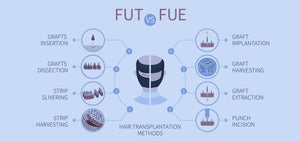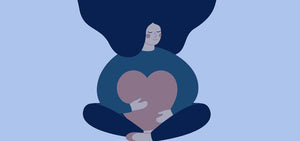Hair loss can affect both men and women at any age. Factors that disrupt the normal hair cycle can lead to hair thinning and loss. These distressing episodes of hair shedding may actually the first signs of early androgenetic alopecia (male pattern hair loss). The hair that is noticed on pillows, brushes, or shower drains is an unwelcome sight, which is why to protect against the grief and anguish, one needs to have a complete picture of thinning hair treatments and tips.
Types of hair
There are three types of hair that grow on the body:
- Lanugo hair - thin, soft hair that normally covers the human fetus in the womb. While it is generally replaced by vellus hair, it is sometimes present at birth. It disappears after a few weeks.
- Vellus hair - also a thin, short type of hair that covers almost the entire surface area of the human body. In male pattern hair loss, there is a noted increase in vellus hair. On the other hand, the appearance of vellus hair in places where there was no hair on the scalp (following thinning hair treatments) is a very good sign. Vellus hair can turn into normally functioning healthy hair (terminal hair).
-
Terminal hair - thick, long, dark hair that replaces vellus hair in the armpits, and pubic area in men and women.
The normal hair cycle
Hair grows in a set cycle. Like many biological functions, it depends on precise timing and supply of adequate nutrients.
The hair cycle consists of 4 phases:
- Anagen - Active hair growth (2-6 years). The hair is still attached to the “papilla” which is like an umbilical cord. It is the source of nutrients and supplies blood to the growing hair follicle. Approximately 85-90% of all scalp hair is normally in the anagen phase.
- Catagen - Transition from anagen to telogen (3-6 weeks). At this point in the hair cycle the follicle slowly detaches from the papilla and heads into the telogen phase. Approximately 2-3% of hairs are in this phase.
- Telogen - The phase of rest (2-4 months). The hair is fully detached from the papilla. About 10-15% of hairs undergo the rest period.
- Exogen - Dead hair is released. The inactive or dead hair is ejected from the skin and falls away. The cycle then begins anew.
Because the hair follicles cycle independently, some hairs are growing while others are being expelled. This way, the numbers of hairs and fullness remain stable.
Types of hair loss
The most common type of hair loss, androgenetic alopecia, is caused by a hormone called dihydrotestosterone (DHT). It forces hair follicles to shrink and shed. First the crown and frontal area, then the top and mid-frontal regions are affected.
The second most common type of hair shedding is called telogen effluvium (diffuse hair loss). This occurs when follicles are forced into the telogen phase prematurely. A shift occurs, and the ratio of anagen to telogen becomes significantly skewed, reflecting on the outside as tufts of shed hair and a thinning scalp.
In androgenetic alopecia, a hormone called dihydrotestosterone (DHT) forces hair follicles to shrink and shed First the crown and frontal area, then the top and midfrontal regions are affected.
Importantly, anagen hair loss is never normal and is only seen in people undergoing chemotherapy or radiation treatment.
How to treat thinning hair
1. Protect against the elementsThe sun is the giver of light, energy, and is essential for life. But with everything, moderation seems to yield a perfect balance. Too little sun leads to Vitamin D deficiency, and tremendously poor hair and nails. Too much sun is a recipe for hair disaster due to the damaging free radicals associated with ultraviolet (UV) radiation.
Transitioning from winter to spring and summer, one should be cautious of protecting against harmful UV rays. Suntanning and extended exposure may rob hair of precious moisture and force it to start shedding.
Hair is a unique part of the human body because it is at the same time incredibly strong and incredibly fragile. Natural hair structure is healthy, thick, hair shafts with normal/low porosity. Chemical treatments which include colouring, perms, and other procedures, change the chemical and physical makeup of each hair strand. Hair becomes weak, like a frail piece of china. It may fall out or simply look dull and lifeless.
Steer clear of anything chemical, stick to natural thinning hair treatments such as plant extract oils (coconut is a good one), henna, and natural shampoos and conditioners.

Nothing can replace a diet rich in vitamin, minerals, nutrients and proper hydration. But - as adult life starts to creep in - people sometimes forget to feed their body right. Radical or fad dieting may trigger diffuse or male pattern hair loss in susceptible individuals.
Vitamins and minerals that are associated with healthy hair include:
- Vitamin D
- Biotin
- Folic Acid
- Zinc
- Iron
- Fatty acids
The optimal concentration of proportion of nutrients difficult to keep track of, especially with stress eating away at people. Stress causes poor nutrition, and poor nutrition causes stress. A scientifically formulated supplement is a good way to keep vitamins and minerals in balance and adequate supply.
Washing, drying, and pinning up hair is the easiest solution for a quick and easy hairstyle. Athletes and women on-the-go often use elastic hair bands, tight ponytails or cornrows. This leads to high tension on the hairs, especially in the frontal and temporal regions. Oftentimes, hair can’t handle the pressure and stretching, breaks off, or is left on the hair accessory - known as traction alopecia.
Thinning hair treatment in this case is simply a change in hair styling technique. Stimulating hair growth with natural hair supplements may be required in advanced stages of traction alopecia.
Physiologic stress such as surgical trauma, high fever, chronic systemic illness, blood loss, and childbirth can cause telogen hair loss.
The relationship between emotional stress and hair loss is difficult to quantify. Anecdotal evidence shows that acute reversible hair loss can occur in cases of extreme stress. However, the connection between chronic hair loss and psychological stress is considered controversial.
While everyday stresses are not enough to trigger hair loss, a combination of stress and other factors may potentiate each other, causing irreparable damage.
As mentioned before, hair is a fragile part of the body, susceptible to chemicals and environmental stress. Hair products often boast of their unique properties, but fail to mention the detrimental effects the chemical formula has on hair. Hair care products should clean thoroughly without stripping away proteins.
Use a naturally-based, gentle shampoo and conditioner to maximise volume and hydration with pure plant extracts.
Thinning hair may also be due to some underlying medical condition. There are dozens of rare disorders, but the most common culprits are thyroid diseases, autoimmune disorders, systemic diseases, and medication-induced hair loss.
Alopecia Areata is an autoimmune disorder where the body literally attacks hair follicles, rendering them incapable of producing healthy hairs. A detailed history and medical workup, along with specific diagnostic methods can show if alopecia areata is to blame. Normally, it manifests as a patch or patches of baldness.
Oxford Biolabs® now offers a Free online hair consultation with a hair expert. Book a call today!
Smoking and alcohol related deaths are among the highest (of any cause of death) worldwide. Both smoking and alcohol abuse have been linked to thinning hair. Not surprising for some because of the toxic effects they have on the body.
Attempting to deal with hair loss without quitting smoking or while hitting the bottle is like being chased by an ever-growing snowball (or hairball). Bad habits make it difficult to oxygenate and revitalise precious hair strands.
Genetics are genetics. Relatively unchangeable, they inevitably play out their course. This is true for age and age-related changes like hair loss, greying, and skin-ageing. Oxidative stress increases ageing, so supporting anti-oxidant systems is vital. Supplements for greying and skin ageing can suppress the speed of ageing. Life extension science is the field of medicine that researches and finds solutions to ageing, and Oxford Biolabs® is at the forefront of anti-ageing research.
Conclusion
Hair thinning can be caused by one factor or multiple factors. The more one does to delay and prevent hair loss - the better the results. Thinning hair can be solved by making just a few simple changes to lifestyle choices. Eat properly, get enough sleep, watch the chemicals, and supplement the diet with a proven combination of vitamins and minerals.




